DMAC BUILDINGS

Weather Tite-(EPS)
Weather Tite-(EPS) Expanded Polystyrene Rigid Board Insulation
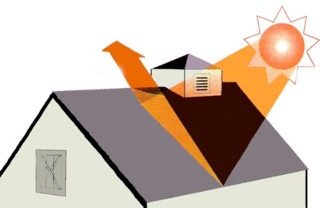
Q and A
Question: Is EPS moisture resistant?
Answer: EPS is non-hygroscopic and does not readily absorb moisture from the atmosphere. Its closed-cell structure reduces the absorption and/or migration of moisture into the insulation material. Although EPS provides a high level of moisture resistance and breathability, recommended design practices for walls and foundations should be followed in the selection of vapor and moisture barriers for severe exposures.
Question: How does EPS rate in terms of moisture resistance?
Answer: A study by the Energy Materials Testing Laboratories (EMTL)1 has shown that EPS insulation installed in well-constructed roofs does not absorb appreciable moisture, well under conditions characteristic of prolonged, cold, damp winters. The same amount of moisture absorbed (an average of 0.2% by weight) has little or no effect on its compressive or flexural strength, and the EPS insulation retains between 95% and 97% of its thermal efficiency.
Question: Does moisture affect the thermal performance of EPS insulation?
Answer: Yes. The widespread use of EPS insulation products has been proven over the past 30 years in both commercial and residential buildings, in a variety of applications. Extensive industry testing has confirmed that even small quantities of moisture absorption have a minimal effect on the thermal performance of EPS insulation. For example, the Energy Division of the Minnesota Department of Public Service found that seven-year-old samples of EPS used in exterior foundation insulation showed moisture levels of only 0.13%. It also concluded that the EPS insulation retained between 95 and 97 percent of its thermal efficiency and that there was no effect on its thermal efficiency and that there was no effect on its compressive or flexural strength properties. Moisture typically allows for an increase in heat transfer or conductivity. Proper design, construction techniques and choice of insulation reduce the opportunity for moisture to either leak or be driven into the insulation cavity where the thermal performance of the system may be effected.
Question: Can EPS act as a vapor barrier?
Answer: No, although EPS has a low water vapor transmission rate, EPS is not a vapor barrier. Rather it "breathes", and therefore does not require costly venting as do other insulation materials, which would otherwise trap moisture within walls and roof assemblies.
Question: What conditions influence the choice of a vapor barrier?
Answer: Each roofing application should be studied to determine the need for a vapor retardant to control internal condensation. Based on studies sponsored by the National Roofing Contractors Association and Midwest Roofing Contractors Association, vapor retardant placement for EPS insulated roof systems is less critical that for either roof insulations.
Question: How does EPS withstand temperature cycling?
Answer: EPS withstands in situ freeze-thaw cycling without loss of structural integrity or other physical properties. Testing by Dynatech Research and Development Company or Cambridge, Massachusetts examined core specimens of EPS recovered from existing freezer walls, some as old as 16 years, prove that EPS is able to withstand the abuse of temperature cycling.
Question: In what applications does EPS have advantages over extruded foams?
Answer: Since density, thickness and the dimensions of EPS can be easily customized to meet individual building specifications, EPS insulation provides specifiers with increased flexibility in the design of the following applications:
-
Tapered roof insulation
-
EIFS architectural profiles
-
Sheathing
-
Below Grade Applications
-
Geotechnical
-
Structural Insulated Panels
-
Soil Stabilization
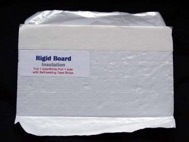
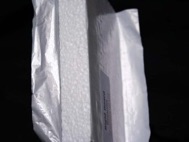
Weather Tite-(EPS) Expanded Polystyrene Rigid Board stops hot and cold from mixing and therefore prevents a dew line from forming.
Building a new home, garage, barn, church, business or remodeling any building?
The Weather Tite-(EPS) Expanded Polystyrene Rigid Board Insulation System will save you money on construction and on heating/cooling costs for years to come. Don't waste time, money and labor using multiple products to meet new codes. Why build larger 2x6, 8” and 16" cavities in the roof when all you need is RigidBoard that will cover the thermal bridges. Rigid Board is easy to install and will not mold, rot, break down, or cause any health concerns. Build without fiberglass the easy way with Rigid Board. Rigid Board is a revolutionary way of putting together a 50 year old insulation technology with NASA's reflective radiant barrier technology to uniquely make the only insulation now offering a totally impermeable Expanded Polystyrene "EPS" Core with pure aluminum foil facings. Rigid Board Insulation is proven, tested, and building code compliant. The laminated facings reflect up to 97% of the radiant energy thereby reducing heat gain or loss. The unique technology also reduces losses to conduction, convection, & condensation. It installs on walls and on ceilings. For exposed surfaces, the white polypropylene fiberglass scrim finish is durable, washable, and is acid & UV protected. It’s a great pre-finish for walls, basement ceilings, garages, barns, and agricultural facilities.
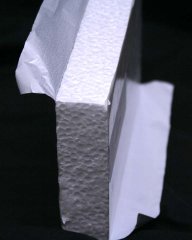
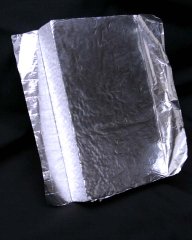
Available Sheet Sizes
3/4” x 4’ x 8’ to 16’ lengths
1” x 4’ x 8’ to 16’ lengths
1-1/2” x 4’ x 8’ to 16’ lengths
2” x 4’ x 8’ to 16’ lengths
2-1/2” x 4’ x 8’ to 16’ lengths
Custom thickness and length also available
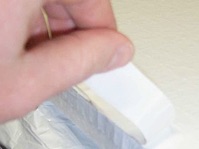
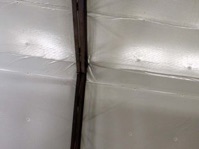
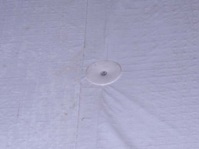
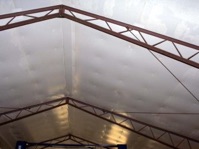
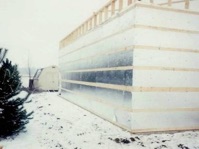
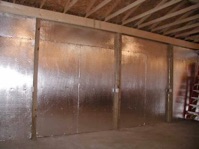
EPS is shipped by bundles wrapped in a protective material.
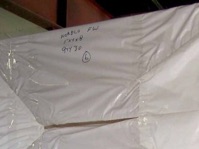
Technical Data
-
Typical Physical Properties
-
Sheet sizes: 1/2” x 4’ x 8’ to 16’ lengths
-
3/8” x 4’ x 8’ to 16’ lengths
-
1” x 4’ x 8’ to 16’ lengths
-
1-1/2” x 4’ x 8’ to 16’ lengths
-
2” x 4’ x 8’ to 16’ lengths
-
Custom Thickness and Length Available
-
Product Composition
-
Core – EPS (expanded polystyrene)
-
Faces – Aluminum Foil / Aluminum Foil with
-
fiberglass
-
scrim reinforcement
-
Aluminum Foil / White Aluminum Foil with
-
fiberglass scrim reinforcement
-
Surface Emissivity—ASTM E408 (foil) .03
-
Flame Spread Index – ASTM E84 (EPS foam) 25
-
Smoke Development – ASTM E84 (EPS foam) 300
-
Fire Rating – NFPA Spec 101 Class A/Class 1
-
Puncture Resistance (psi) ,ASTM D 774 90
-
Tensile – lbs., ASTM C1136 1.9 – 2.8
-
Water Vapor Transmission -ASTM E96 .02
-
(grains/hr ft2 in Hg)
-
Fungus Resistance/ Mold Growth C665/C1338 None
-
Useable Temperature –40 to +200
-
Preliminary Test Results
-
Reflectivity (Foil/Foil) .97

1216 Tamara Drive, Saint Joseph, MO 64506
Toll Free: (877) 704-7283 ∙ Local: (816) 396-6256 ∙ E-mail: info@dmacbuildings.com